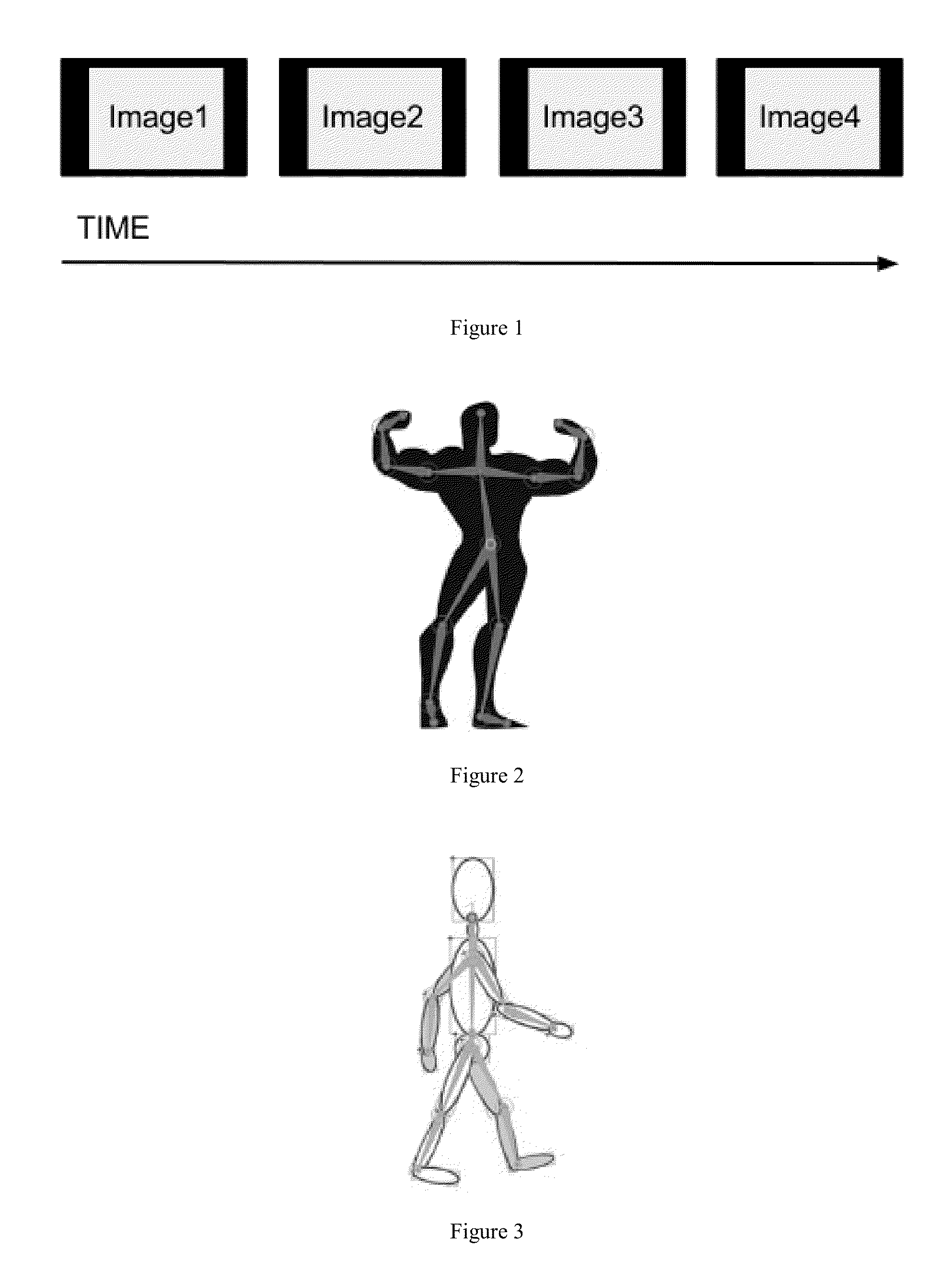Systems and Methods for Displaying Animations on a Mobile Device
a mobile device and animation technology, applied in the field of systems and methods for displaying 2d animations, can solve the problems of inability to modify the parts of the animation, the artist's significant amount of time, and the traditional animation technique requires significant memory storage capacity, so as to achieve less memory, reduce processing power, and reduce memory capacity
- Summary
- Abstract
- Description
- Claims
- Application Information
AI Technical Summary
Benefits of technology
Problems solved by technology
Method used
Image
Examples
example 1
Generation of Custom Animations
[0084]The animation systems described herein can allow the flexibility to create rich sets of animations for small memory devices. The hierarchy system with the ability to swap out nodes and collections gives the freedom to define complex nested combinations of animations. In Table 1 below, the system is currently used to create the animation set for a unique set of male and female villager characters (with swappable facial features) that can be equipped with different items and tools.
TABLE 1AnimationCollection NameVariationsTotal CombinationsMale Villager Unique FacesMale Face Shape5Male Eyes5Male Nose5Male Hair5Male Mouth5Male Villager Face Total5 × 5 × 5 × 5 × 53125Female Villager Unique FacesFemale Face Shape5Female Eyes5Female Nose5Female Hair5Female Mouth5Female Villager Face Total5 × 5 × 5 × 5 × 53125Unisex ToolsBuilding, Mining, Wood, etc16 Unisex Decorative ItemsHats, Earrings, etc16 Unisex Specialized BuildingFarm, Joose Hut, Etc5Male Animati...
example 2
Sample Male and Female Face Combinations
[0086]FIG. 17 shows sample male face combinations. In the sample, there are 5 different hair combinations, 5 different eye combinations, 5 different noses, 5 different mouths, 5 different head pieces, 5 different face shapes. All the variations make a possible combination of 15,625 unique faces. New facial features can be released as an update or as downloadable content.
[0087]FIG. 18 shows sample female face combinations. In the sample below there are 4 different face shapes, 6 hair styles, 5 eye combinations, 6 mouth combinations, 5 head pieces and 5 different noses. All variations make a possible combination of 18,000 faces.
example 3
[0088]FIG. 26, FIG. 27, FIG. 28, FIG. 29, and FIG. 30 show parts 1, 2, 3, 4, and 5 of an exemplary animation data file. The animation data file includes a hierarchies section, a collections section, and an animations section. A hierarchies section is shown in FIG. 26 and FIG. 27. The hierarchies section includes a hierarchy for an animation of a child running, which includes a portion to indicate content size. The children array portion of the hierarchies section defines multiple nodes, which can be collection, embedded, or image nodes. FIG. 28 shows the collections section of the animation data file. The collections section includes a children array which defines multiple collections. FIG. 29 and FIG. 30 show the animations section of the animation data file. The animations section includes a frames array that defines the plurality of frames in an animation sequence. Each frame defines a transform matrix and references an image file.
PUM
 Login to View More
Login to View More Abstract
Description
Claims
Application Information
 Login to View More
Login to View More - R&D
- Intellectual Property
- Life Sciences
- Materials
- Tech Scout
- Unparalleled Data Quality
- Higher Quality Content
- 60% Fewer Hallucinations
Browse by: Latest US Patents, China's latest patents, Technical Efficacy Thesaurus, Application Domain, Technology Topic, Popular Technical Reports.
© 2025 PatSnap. All rights reserved.Legal|Privacy policy|Modern Slavery Act Transparency Statement|Sitemap|About US| Contact US: help@patsnap.com



